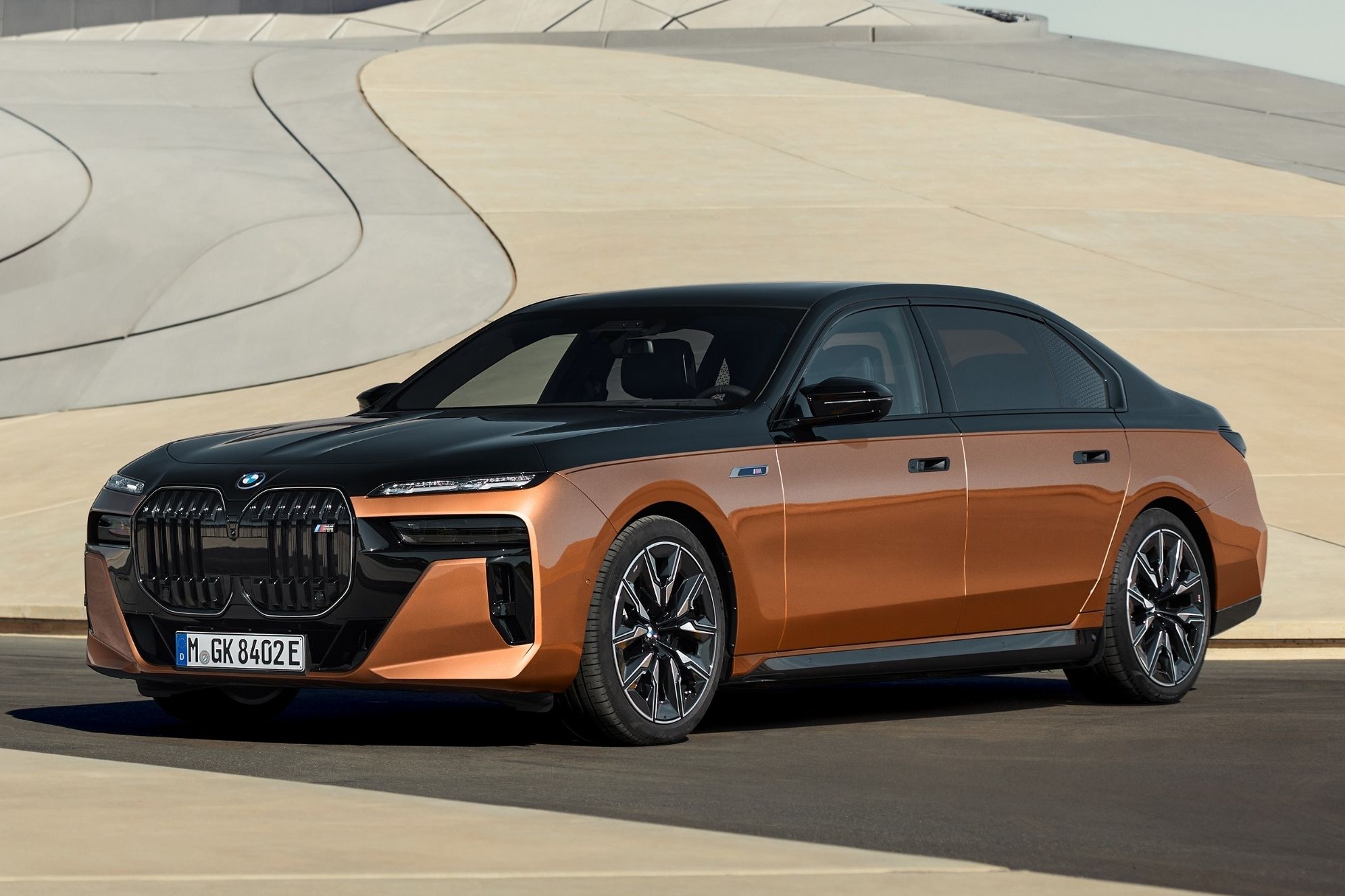
BMW has invented a new front fascia that integrates the headlights into the grille surface behind one seamless panel, with active lenses that can change shade to allow light to be visible through.
Current BMW grille designs are already polarizing fan opinions, but the stylists seem to think there's room for even more extreme future front-end designs. A new patent unearthed by CarBuzz and filed with the World Intellectual Property Organization (WIPO) showcases BMW's new one-piece "mask" to replace the traditional grille as we know it, presumably for its next generation of electric cars like the next-gen BMW i7. Instead of having a grille and headlights as separate units, the entire front end of the car is covered by a single, smooth panel. From behind this, various LED DRL patterns can be shown, and the portion of the lens ahead of the headlights can be switched from opaque to transparent.
EVs don't need the air intakes that internal combustion engine vehicles do, and the kidney grille inserts on the i7, iX, and i4 are purely for decorative purposes to retain brand identity. But what if this fascia could be used to change the appearance of the car on a whim?
To reconcile the conflicting requirements of doing away with superfluous air intakes while keeping the vehicle instantly recognizable as a BMW, the engineers are now proposing a multi-layer panel to carry both the light signature of an EV, as well as whatever interpretation of the kidney grille outline the stylists could dream up.
The benefits will be wide-ranging, but the first one may be that we'll finally see the end of the outrageous scoops and angles BMW has been putting on its cars lately, ditched in favor of a single, smooth composite unit. This design will also put the headlights behind a protective screen, reducing the chances of damage to the high-tech LED- or laser light emitters.
The key to this development is its thin dimensions because this will allow greater radar permeability with less distortion for the vehicle's onboard sensors due to the absence of any air gap between the layers. This decorative cover element will consist of multiple laminated layers and may even include a de-icing element, as noted in the patent application. This will help eliminate iced-over headlights in colder climates, something EV owners have struggled with due to the lack of heat from LED elements.
The outer layer will be transparent and made of polycarbonate, as will the translucent inner layer. Between them will be a sandwich made up of layers of light-insulated plastic with non-permeable coatings, connected to an LED light source or sources for each function. These layers will be responsible for conducting light to predetermined areas.
The light in the insulated light-conductive layer will then escape to the front of the car as determined by micro-engraved patterns on this layer's outer non-permeable coating. By engraving different openings at different locations and angles on the light conducting layer's non-permeable coating, a unique light signature could be achieved, with a traditional-looking grille outline and illuminated "grille slats" among the possibilities.
As shown in the patent application sketches, the stylists could create separately-illuminated grille shapes while incorporating accents near the transparent headlight sections to indicate different models, trim levels, or operating modes. This will also enable distinctive DRL designs to differentiate models and trim levels.
If you think the current BMW grille trend is too extreme, brace yourself for the "grille" designs this new front panel design could enable. Notice the trapezoidal kidneys illuminated in figure 7 of the patent drawings? That is but one of the many aesthetically challenging concepts that could make the XM's glowing face look mild by comparison…
